How Streaming Has Changed the Way We Watch TV Forever
The way we consume television has undergone a seismic shift in recent years, and the catalyst for this change is none other than streaming. Gone are the days of waiting for your favorite show to air at a specific time or flipping through channels until something catches your eye. Now, viewers have an unprecedented level of control over what they watch and when they watch it. With just a few clicks on our devices, entire seasons of shows become available at our fingertips. This transformation isn’t merely about convenience; it’s reshaping how stories are told and experienced. As more people turn to streaming as their primary source of entertainment, traditional viewing habits continue to evolve dramatically. Buckle up as we dive deeper into how streaming has revolutionized our TV-watching experience forever.
The Evolution of TV Watching: From Cable to Streaming
 Television has transformed dramatically over the past two decades. Once dominated by cable subscriptions, viewers now find themselves immersed in a world of streaming options. Cable offered limited choices with rigid schedules. Viewers were at the mercy of network programming and time slots.
Television has transformed dramatically over the past two decades. Once dominated by cable subscriptions, viewers now find themselves immersed in a world of streaming options. Cable offered limited choices with rigid schedules. Viewers were at the mercy of network programming and time slots.
Missing a show meant waiting for reruns or purchasing DVDs. Then came the rise of streaming services. Platforms like Netflix and Hulu changed everything. They introduced on-demand viewing, allowing audiences to watch what they want when they want. This shift empowered viewers to curate their own experiences. Binge-watching became a phenomenon as entire seasons dropped at once, shifting how stories are consumed.
The Impact on Traditional Television Networks and Cable Providers
Traditional television networks and cable providers have faced a seismic shift with the rise of streaming. Once dominant players in the entertainment industry, they now juggle dwindling viewership numbers as audiences flock to on-demand content. This transition has forced many networks to rethink their strategies. Some are developing their streaming platforms or partnering with existing services to maintain relevance. The goal is clear: adapt or risk becoming obsolete. Cable subscriptions have plummeted, leading to what some call “cord-cutting.” Viewers appreciate the flexibility that streaming offers—the ability to watch anytime, anywhere without being tethered to a schedule.

Rise of Original Content on Streaming Platforms
The rise of original content on streaming platforms has transformed the entertainment landscape. Gone are the days when viewers relied solely on traditional networks for their favorite shows. Platforms like Netflix, Amazon Prime Video, and Hulu have invested heavily in producing high-quality series and films. This shift empowers creators to explore diverse narratives that resonate with audiences. With exclusive releases and innovative storytelling, these platforms attract subscribers eager for fresh material. Original series often push boundaries, tackling complex themes and characters that traditional television might shy away from.
Conclusion
 As streaming continues to evolve, technological advancements will play a crucial role in shaping its future. Innovations like 5G networks promise to enhance streaming quality and accessibility. Viewers can expect faster load times and higher definition options as bandwidth expands.
As streaming continues to evolve, technological advancements will play a crucial role in shaping its future. Innovations like 5G networks promise to enhance streaming quality and accessibility. Viewers can expect faster load times and higher definition options as bandwidth expands.
The landscape of entertainment is shifting rapidly, with streaming at the forefront of this change. As viewers continue demanding more flexibility and diverse content, businesses will adapt or risk falling behind. The battle for audience attention is fierce, ensuring that innovation remains a constant driver in the industry.…







 The original King Kong takes place almost entirely on Skull Island, and Jackson’s remake does an incredible job of bringing the island to life. From the lush jungles teaming with dinosaurs to the mysterious natives inhabiting its caves, every inch of Skull Island feels like a distinct world with secrets and dangers.
The original King Kong takes place almost entirely on Skull Island, and Jackson’s remake does an incredible job of bringing the island to life. From the lush jungles teaming with dinosaurs to the mysterious natives inhabiting its caves, every inch of Skull Island feels like a distinct world with secrets and dangers.

 Most importantly, enjoy the music and have a great time. Going to live shows is a great way to experience your favorite bands in person and create unforgettable memories. Moreover, you may even discover a new artist that you love.
Most importantly, enjoy the music and have a great time. Going to live shows is a great way to experience your favorite bands in person and create unforgettable memories. Moreover, you may even discover a new artist that you love.

 The search for the lost city of Atlantis is on. With a team of intrepid adventurers, you must brave the rising waters and uncover the secret of this mysterious sunken kingdom. In Atlantis Rising, players must use their wits to explore, reveal secrets, rebuild structures, and gain powerful abilities as they progress through each level of the game. Featuring intricate 3D models, beautiful artwork, and a thrilling storyline – Atlantis Rising will have you hooked until the very end.
The search for the lost city of Atlantis is on. With a team of intrepid adventurers, you must brave the rising waters and uncover the secret of this mysterious sunken kingdom. In Atlantis Rising, players must use their wits to explore, reveal secrets, rebuild structures, and gain powerful abilities as they progress through each level of the game. Featuring intricate 3D models, beautiful artwork, and a thrilling storyline – Atlantis Rising will have you hooked until the very end.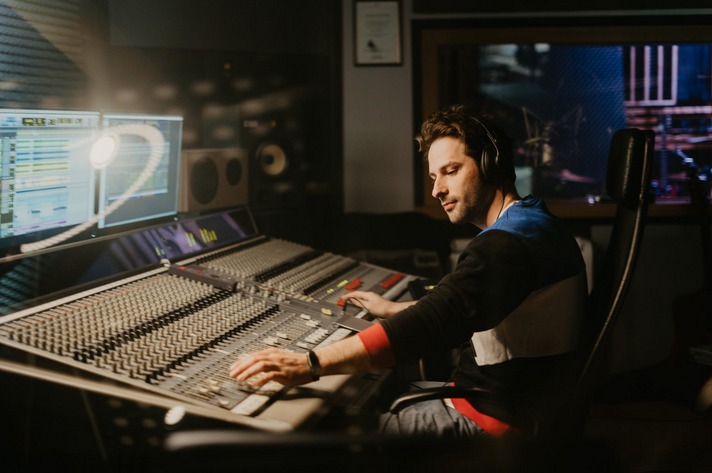
 One of the main benefits of using online mixing and mastering services is achieving professional sound quality. These services are staffed by experienced engineers who know how to mix and master audio effectively.
One of the main benefits of using online mixing and mastering services is achieving professional sound quality. These services are staffed by experienced engineers who know how to mix and master audio effectively. Lastly, online mixing and mastering services are often very affordable. They don’t have the same overhead costs as traditional studios, which allows them to offer lower rates. In addition, many services offer discounts for first-time users or for those who purchase multiple sessions. So, if you’re looking for a great way to improve the sound quality of your show, consider using an online mixing and mastering service. You won’t be disappointed.
Lastly, online mixing and mastering services are often very affordable. They don’t have the same overhead costs as traditional studios, which allows them to offer lower rates. In addition, many services offer discounts for first-time users or for those who purchase multiple sessions. So, if you’re looking for a great way to improve the sound quality of your show, consider using an online mixing and mastering service. You won’t be disappointed.
 Undoubtedly, you don’t want to be a wallpaper or a center of attraction because of an inappropriate outfit. For sure, all you want is to look great and confident in what you are wearing. Always choose an elegant outfit. But never discount comfort. This means that you should never wear the most beautiful heels in your collection but don’t give you the best comfort. For men, scrap those leather jackets if they let you perspire all night.
Undoubtedly, you don’t want to be a wallpaper or a center of attraction because of an inappropriate outfit. For sure, all you want is to look great and confident in what you are wearing. Always choose an elegant outfit. But never discount comfort. This means that you should never wear the most beautiful heels in your collection but don’t give you the best comfort. For men, scrap those leather jackets if they let you perspire all night. Drink Moderately
Drink Moderately
 Classic board games always come in handy whenever you want to brighten up a room or break the ice and start a conversation with people. There are many board games available. Thanks to the online world, some of these games are available online, making it convenient for gamers who cannot physically access the tools for the game.
Classic board games always come in handy whenever you want to brighten up a room or break the ice and start a conversation with people. There are many board games available. Thanks to the online world, some of these games are available online, making it convenient for gamers who cannot physically access the tools for the game.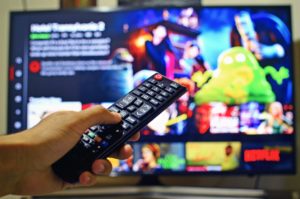 Do you fancy movies or music? Or maybe both? Thanks to the latest tech upgrades, you can enjoy audio and visual content online through streaming services.
Do you fancy movies or music? Or maybe both? Thanks to the latest tech upgrades, you can enjoy audio and visual content online through streaming services. 
 One of the main reasons you should try kayaking with your family is that it is fun and entertaining. Many people struggle to find fun group activities they can engage in with their families. Those who have tried kayaking will agree that it is entertaining when you glide on the water when paddling.
One of the main reasons you should try kayaking with your family is that it is fun and entertaining. Many people struggle to find fun group activities they can engage in with their families. Those who have tried kayaking will agree that it is entertaining when you glide on the water when paddling. As mentioned earlier in the text, many families face problems that can be solved by spending more time together. Everyone should strive to have a great bond with their families, and one great way to do this is to go kayaking together. Most people bond more when they have unique experiences with each other.
As mentioned earlier in the text, many families face problems that can be solved by spending more time together. Everyone should strive to have a great bond with their families, and one great way to do this is to go kayaking together. Most people bond more when they have unique experiences with each other.
 Board games are interactive activities that can be perfect for you and your kids. Give the kids a poster board, some construction paper, and some markers. You can ask them to design their own board game, which the entire family can play later in the day. For some inspiration, you can give them a theme to follow.
Board games are interactive activities that can be perfect for you and your kids. Give the kids a poster board, some construction paper, and some markers. You can ask them to design their own board game, which the entire family can play later in the day. For some inspiration, you can give them a theme to follow. Kids loving playing and running around, especially in the kitchen. As long as you are around to keep them away from hurting themselves, the kitchen is a sure way to keep them entertained. First, you can get the little cute aprons and toques. You can then have them involved with cooking like measuring ingredients and mixing them up. Baking and cooking together will keep your kids entertained and also fed!
Kids loving playing and running around, especially in the kitchen. As long as you are around to keep them away from hurting themselves, the kitchen is a sure way to keep them entertained. First, you can get the little cute aprons and toques. You can then have them involved with cooking like measuring ingredients and mixing them up. Baking and cooking together will keep your kids entertained and also fed!
 Various companies have different kinds of equipment, which are also of varying qualities. Assume you have an event, say a wedding, and have a specified theme which you communicate to the service providers. You can rarely have uniformity if you work with several companies or buy the items yourself.
Various companies have different kinds of equipment, which are also of varying qualities. Assume you have an event, say a wedding, and have a specified theme which you communicate to the service providers. You can rarely have uniformity if you work with several companies or buy the items yourself. You may decide to buy your equipment and have casual employees to offer the various services you need for your event. While you have control over all the services and gadgets or items, it can cost you so much.
You may decide to buy your equipment and have casual employees to offer the various services you need for your event. While you have control over all the services and gadgets or items, it can cost you so much. Companies for renting events equipment and offering services have vast experience since they have been in the field for long. They also hire well-trained and qualified persons who deliver top-notch services. They can even compensate you for poor services or any damage.
Companies for renting events equipment and offering services have vast experience since they have been in the field for long. They also hire well-trained and qualified persons who deliver top-notch services. They can even compensate you for poor services or any damage.



 when on board, they are not costly and a burden to one’s pocket. It is a comparison to renting a venue that incurs other costs along with it, such as decoration, catering, security, and other expenses, which leads to a massive budget in planning. If traveling with friends on these party buses who will be sharing the costs, it becomes incredibly inexpensive.
when on board, they are not costly and a burden to one’s pocket. It is a comparison to renting a venue that incurs other costs along with it, such as decoration, catering, security, and other expenses, which leads to a massive budget in planning. If traveling with friends on these party buses who will be sharing the costs, it becomes incredibly inexpensive.
 Creating good music is the best way to capture the attention of your audience. To create good music, you need to make sure that you write your lyrics. Music is also about beats, and you need to make sure that you come up with the right beats.
Creating good music is the best way to capture the attention of your audience. To create good music, you need to make sure that you write your lyrics. Music is also about beats, and you need to make sure that you come up with the right beats.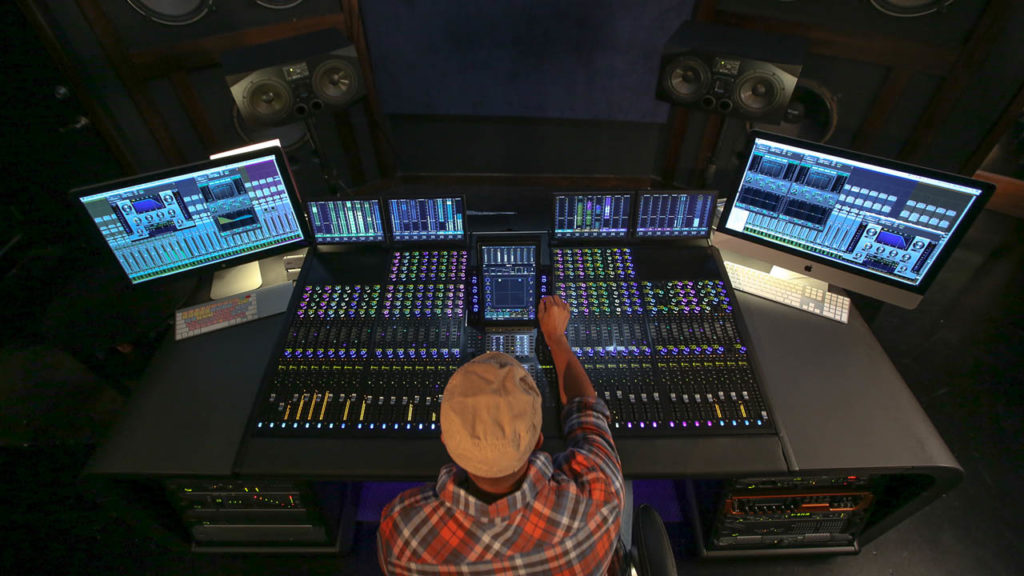



 Actually, the price should come last on your checklist. This is because most people tend to go the cheapest table in the store while forgetting that cheaply is expensive. You do not want to spend even the little money you have on something that will serve you for a short period and break down. Make sure that you consider other factors before making a decision based on the price. However, this does not mean that all quality tables are expensive. This is why you need to ask various sellers for the costs. This will enable you to make a reasonable budget for buying the best ping-pong table from a given dealer.
Actually, the price should come last on your checklist. This is because most people tend to go the cheapest table in the store while forgetting that cheaply is expensive. You do not want to spend even the little money you have on something that will serve you for a short period and break down. Make sure that you consider other factors before making a decision based on the price. However, this does not mean that all quality tables are expensive. This is why you need to ask various sellers for the costs. This will enable you to make a reasonable budget for buying the best ping-pong table from a given dealer.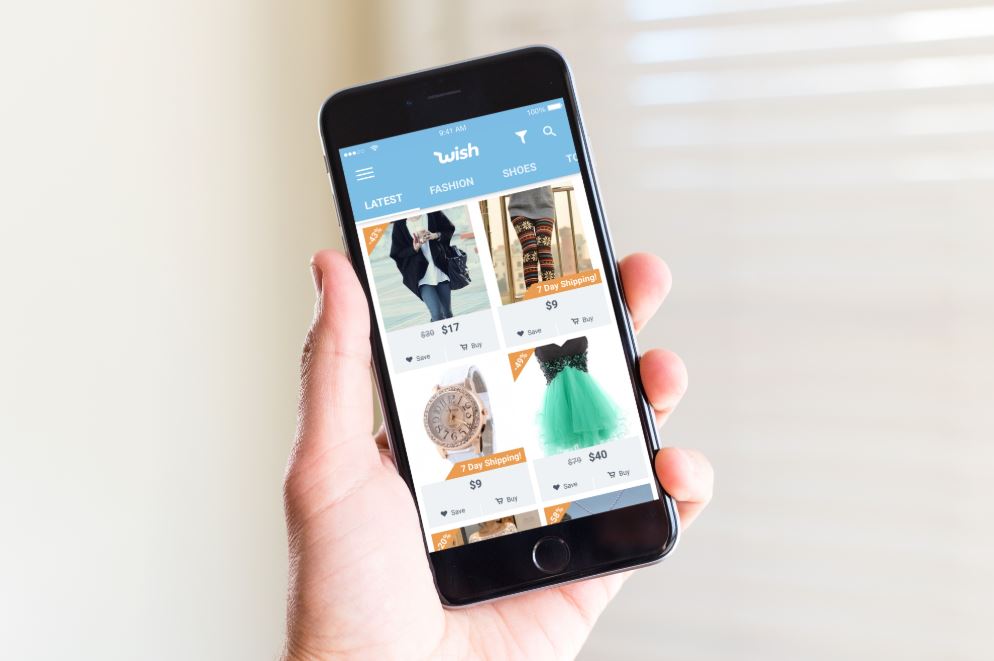
 shops also offer free deliveries, so you do not need to go and pick up your clothes. Buying clothes online is also cheap compared to buying from your local store or boutique. There are different things you should do to avoid mistakes when buying clothes online. They include:
shops also offer free deliveries, so you do not need to go and pick up your clothes. Buying clothes online is also cheap compared to buying from your local store or boutique. There are different things you should do to avoid mistakes when buying clothes online. They include: online shopping sites usually indicate the size and any other relevant information of the clothing you want to buy in the description section. Make sure you have a proper look at it before placing an order. This will reduce the chances of purchasing oversized clothing or one that does not match your preference.…
online shopping sites usually indicate the size and any other relevant information of the clothing you want to buy in the description section. Make sure you have a proper look at it before placing an order. This will reduce the chances of purchasing oversized clothing or one that does not match your preference.…
 When you eat garlic every day while it’s raw or in food, it aids in lowering the levels of cholesterol due to its antioxidant properties. It’s also essential in regulating your blood sugar and blood pressure levels.
When you eat garlic every day while it’s raw or in food, it aids in lowering the levels of cholesterol due to its antioxidant properties. It’s also essential in regulating your blood sugar and blood pressure levels. Garlic has been among the best medicine used by many people. It’s used to cure bacterial, parasitic and fungal infections for many years. The diluted extract of garlic, assists children suffering from tapeworm infections. Small amounts of garlic extracts can also get rid of bacteria causing cavities.
Garlic has been among the best medicine used by many people. It’s used to cure bacterial, parasitic and fungal infections for many years. The diluted extract of garlic, assists children suffering from tapeworm infections. Small amounts of garlic extracts can also get rid of bacteria causing cavities.
 vendors have in-house graphics designer who works to design templates the way you like it to suit the couple’s personalities. You can ask them to make it as creative as possible or coordinate the color scheme with the wedding invitations color. Some photo booth companies may lack graphics specialist hence you may need to choose between some basic templates for your photo booth rental. Look at photo booth rentals they have done before then see how the templates have looked like in the past.
vendors have in-house graphics designer who works to design templates the way you like it to suit the couple’s personalities. You can ask them to make it as creative as possible or coordinate the color scheme with the wedding invitations color. Some photo booth companies may lack graphics specialist hence you may need to choose between some basic templates for your photo booth rental. Look at photo booth rentals they have done before then see how the templates have looked like in the past. It is useful that you ask if you need a copy of the pictures taken during your photo booth rental. Most photo booth rentals will upload the night’s pictures into an online gallery. If you and the guests download the photo, then post it in other online sites.
It is useful that you ask if you need a copy of the pictures taken during your photo booth rental. Most photo booth rentals will upload the night’s pictures into an online gallery. If you and the guests download the photo, then post it in other online sites.
 A good way to start your research is to start thinking about the games and the theme ideas, such as an outdoor theme or a pampering theme. Opting for an appropriate theme will greatly help you narrow down the options in regards to the hen party activities. Once you have done that, consider the activity to build the party around. Fortunately, there are a plethora of hen party suppliers you can find and choose from. After completing your activity research, proceed by researching into the other aspects of the hen party, which should include a restaurant for the dinner, a nightclub for an evening entertainment, an activity venue, catering options and accommodation.
A good way to start your research is to start thinking about the games and the theme ideas, such as an outdoor theme or a pampering theme. Opting for an appropriate theme will greatly help you narrow down the options in regards to the hen party activities. Once you have done that, consider the activity to build the party around. Fortunately, there are a plethora of hen party suppliers you can find and choose from. After completing your activity research, proceed by researching into the other aspects of the hen party, which should include a restaurant for the dinner, a nightclub for an evening entertainment, an activity venue, catering options and accommodation. Start by sending an initial communication to all the guests, via email or by sending a beautiful handmade card. This is supposed to ask for a commitment from the guests and inform them of the exact date of the party. Once you have done your research, at this point, you will be able to provide some basic details and information pertaining to the party, so as to allow the guests to make a good decision and avoid any nasty surprises or dropouts. When doing this, try to communicate only the relevant and important information, and try not to inundate and overwhelm the guests with a torrent of emails.…
Start by sending an initial communication to all the guests, via email or by sending a beautiful handmade card. This is supposed to ask for a commitment from the guests and inform them of the exact date of the party. Once you have done your research, at this point, you will be able to provide some basic details and information pertaining to the party, so as to allow the guests to make a good decision and avoid any nasty surprises or dropouts. When doing this, try to communicate only the relevant and important information, and try not to inundate and overwhelm the guests with a torrent of emails.…

 As time goes by, many people get to know about the upcoming concerts, and for this reason, the ticket prices increase significantly. Also, the number of tickets is typically limited depending on the capacity of the venue. Thus, it is always ideal to buy Luke Bryan tour tickets or any other concert tickets in advance to avoid last minute rushes. Additionally, another way of buying cheap concert tickets is through presales and promotions.
As time goes by, many people get to know about the upcoming concerts, and for this reason, the ticket prices increase significantly. Also, the number of tickets is typically limited depending on the capacity of the venue. Thus, it is always ideal to buy Luke Bryan tour tickets or any other concert tickets in advance to avoid last minute rushes. Additionally, another way of buying cheap concert tickets is through presales and promotions.



 As a new hobby sportsman, you must first start choosing the safe gun shooting range; this is done by enquiring for the shooting range owners. You must make sure that the range owner has one or more range officers who are responsible for almost all the activities concerning the safety of range. It is the responsibility of the owner to select the best, qualified, and trained range officer. After all, it is for the sake of safety of many human lives in a shooting range.
As a new hobby sportsman, you must first start choosing the safe gun shooting range; this is done by enquiring for the shooting range owners. You must make sure that the range owner has one or more range officers who are responsible for almost all the activities concerning the safety of range. It is the responsibility of the owner to select the best, qualified, and trained range officer. After all, it is for the sake of safety of many human lives in a shooting range. The other thing which is quite necessary for choosing a safe shooting range is the protection of the ears. It is quite obvious that when a bullet is shot, you hear a loud noise which can easily harm or sometimes damage your ears if consistently heard.
The other thing which is quite necessary for choosing a safe shooting range is the protection of the ears. It is quite obvious that when a bullet is shot, you hear a loud noise which can easily harm or sometimes damage your ears if consistently heard.
 instructor taught the guitar skills? The longer the teaching period, the best for you. An instructor who has longer experience knows how to explain things to his students in a way that fits each student. Students who are slow learners can be taught fully as those who learn faster.
instructor taught the guitar skills? The longer the teaching period, the best for you. An instructor who has longer experience knows how to explain things to his students in a way that fits each student. Students who are slow learners can be taught fully as those who learn faster. rner before deciding to go for training, you admired a certain musician who played a certain type of guitar. You may want an electric guitar or an acoustic guitar or the violin. Before choosing the instructor look for the best in whatever instrument you want to learn with.
rner before deciding to go for training, you admired a certain musician who played a certain type of guitar. You may want an electric guitar or an acoustic guitar or the violin. Before choosing the instructor look for the best in whatever instrument you want to learn with.
 There is hardly a kid in this world who doesn’t love playing in an inflatable castle. This toy is a great opportunity for them to bring all their fantasies in one place. More so, they can also share their joy and fun with plenty of other children within the “walls of the castle.”
There is hardly a kid in this world who doesn’t love playing in an inflatable castle. This toy is a great opportunity for them to bring all their fantasies in one place. More so, they can also share their joy and fun with plenty of other children within the “walls of the castle.” When looking for one of these, keep in mind that they come in some forms, shapes, and sizes. If you are worried about accommodating one in your house or backyard, worry not, since you can easily find one that will fit, thanks to the variety of sizes. The used ones you usually find at playgrounds and in parks are often the biggest ones. Also, more often than not, they are customized, so as to meet specific requirements. If you need smaller ones, you can easily find and purchase them from online shops, as well as retail stores. The majority of these little castles can accommodate between five and ten children.
When looking for one of these, keep in mind that they come in some forms, shapes, and sizes. If you are worried about accommodating one in your house or backyard, worry not, since you can easily find one that will fit, thanks to the variety of sizes. The used ones you usually find at playgrounds and in parks are often the biggest ones. Also, more often than not, they are customized, so as to meet specific requirements. If you need smaller ones, you can easily find and purchase them from online shops, as well as retail stores. The majority of these little castles can accommodate between five and ten children.



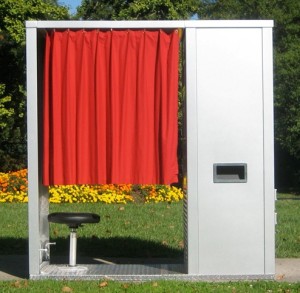 decorations going to waste because of a large mismatched booth. Therefore, have a look at your booth, which will be set up at the party. You are free to ask for pictures from the rental company or give them a visit.
decorations going to waste because of a large mismatched booth. Therefore, have a look at your booth, which will be set up at the party. You are free to ask for pictures from the rental company or give them a visit. Equipment
Equipment



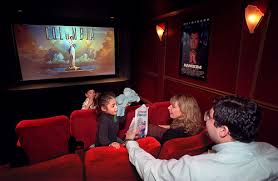 sites will charge for downloading. If you do not want to pay, move on, there are some that are completely free.
sites will charge for downloading. If you do not want to pay, move on, there are some that are completely free.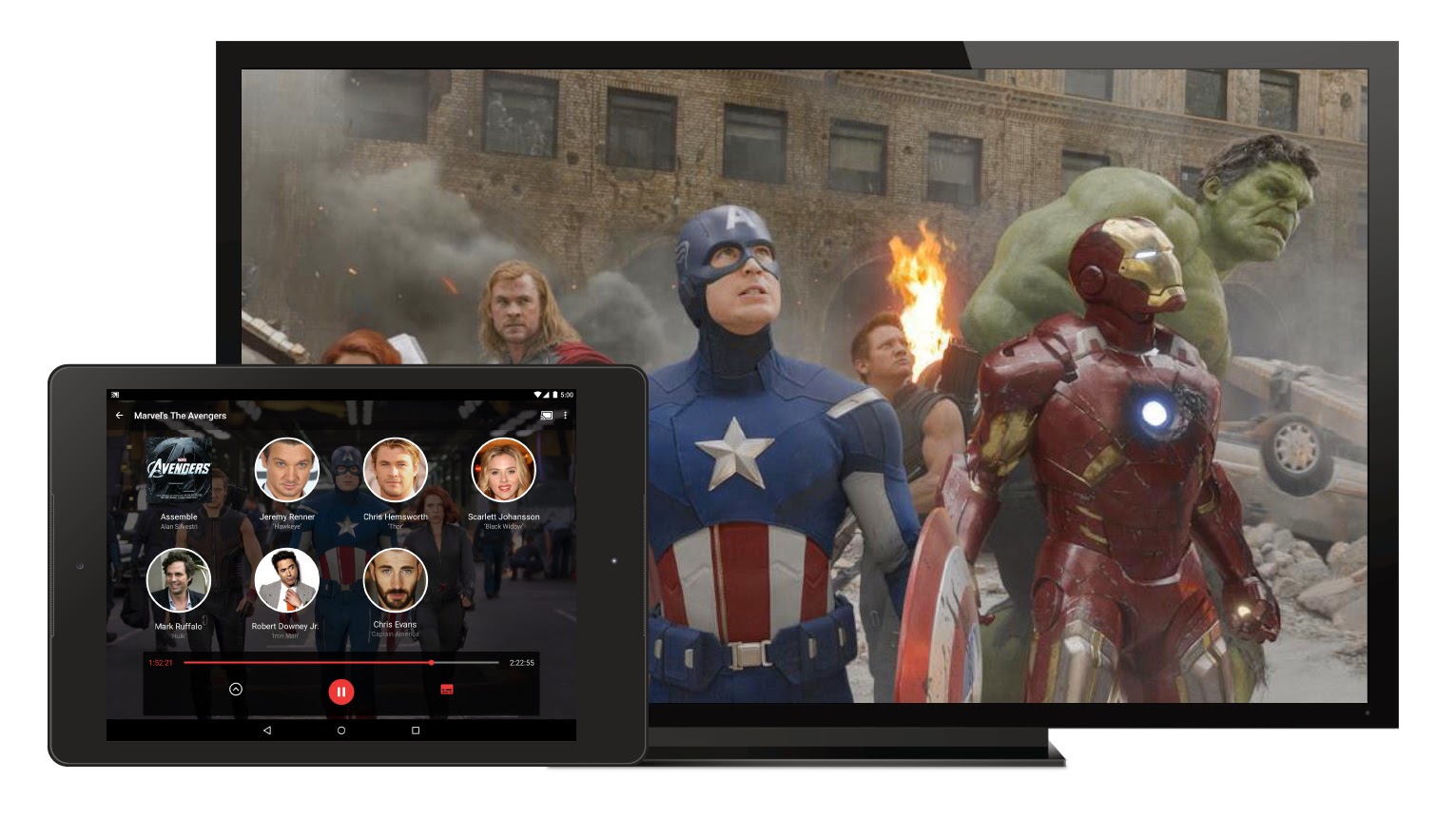
 action should bring up the movies done by the director for you to make a selection. Alternatively, you can enter the name of the starring character in the movie. In case you are just browsing for a good movie without any particular preference, you can search by the year of production or the genre.
action should bring up the movies done by the director for you to make a selection. Alternatively, you can enter the name of the starring character in the movie. In case you are just browsing for a good movie without any particular preference, you can search by the year of production or the genre.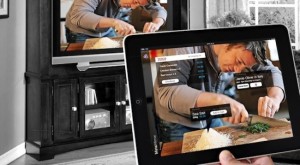 The platform also has reality TV shows, and all the highly rated talk shows as well as engaging sports content. If you have a lot of time on your hands such as when you are on leave, you can elect to watch back to back movies with only breaks to the washroom. The best way to go about this is to watch the movies listed by alphabet. The action of watching the movies alphabetically can keep you busy for the rest of your holiday.
The platform also has reality TV shows, and all the highly rated talk shows as well as engaging sports content. If you have a lot of time on your hands such as when you are on leave, you can elect to watch back to back movies with only breaks to the washroom. The best way to go about this is to watch the movies listed by alphabet. The action of watching the movies alphabetically can keep you busy for the rest of your holiday.
 without sacrificing your health.
without sacrificing your health. The basic principle of weight loss is to burn more calories than you eat. This weight loss product makes you feel less hungry and in that way you do not eat too many calories. Further, it makes the body burn the stored fat for required energy.
The basic principle of weight loss is to burn more calories than you eat. This weight loss product makes you feel less hungry and in that way you do not eat too many calories. Further, it makes the body burn the stored fat for required energy.
 online without caring how much they will be levied.
online without caring how much they will be levied. Watching movies online is advantageous because an individual has access to great movie collections. Certain movies are not available on the DVDs.
Watching movies online is advantageous because an individual has access to great movie collections. Certain movies are not available on the DVDs.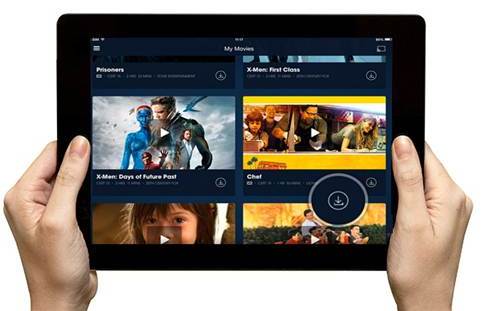
 of popcorn and you can get glued to your screen to watch any movie of your choice. If you’re on vacation and don’t feel like going anywhere, just lay back in bed and run a movie marathon. If you do not feel like watching it now, just download it and watch it later. The biggest plus point of watching movies at Movie2k is that it doesn’t require you to register. Just visit the website and watch your favorite movies for free.
of popcorn and you can get glued to your screen to watch any movie of your choice. If you’re on vacation and don’t feel like going anywhere, just lay back in bed and run a movie marathon. If you do not feel like watching it now, just download it and watch it later. The biggest plus point of watching movies at Movie2k is that it doesn’t require you to register. Just visit the website and watch your favorite movies for free. Finding it difficult to babysit your little ones? Make them busy with a kids’ movie and relax. Children love animated movies, and you can easily find some at Movie2k to keep them occupied till you take a nap.
Finding it difficult to babysit your little ones? Make them busy with a kids’ movie and relax. Children love animated movies, and you can easily find some at Movie2k to keep them occupied till you take a nap.
 used after first weeks of purchase, but even after several years. This is what most parents are looking for.
used after first weeks of purchase, but even after several years. This is what most parents are looking for. How long will your trampoline last? Most trampolines currently on the market are built to last and attract warranties of up to five years. Therefore, do not just choose a trampoline that accommodates your kids, but one that can be used for many years to come.
How long will your trampoline last? Most trampolines currently on the market are built to last and attract warranties of up to five years. Therefore, do not just choose a trampoline that accommodates your kids, but one that can be used for many years to come.
 ovies and TV programs streaming facility. It gained the top spot in no time as all the users voted this app as the “best free movie streaming” application. All the movies and TV shows here are available in full HD resolution, and one can watch thousands of free movies without any login procedures. But unfortunately, Google play removed this app from their store. But ShowBox supports all the OS platforms and is completely compatible with your PC. So you can easily download its apk version using any operating system and can download it on your mobile.
ovies and TV programs streaming facility. It gained the top spot in no time as all the users voted this app as the “best free movie streaming” application. All the movies and TV shows here are available in full HD resolution, and one can watch thousands of free movies without any login procedures. But unfortunately, Google play removed this app from their store. But ShowBox supports all the OS platforms and is completely compatible with your PC. So you can easily download its apk version using any operating system and can download it on your mobile. ill see a “Next” button at the bottom corner of your phone, and you have to tap on that to accept the T&C of the ShowBox app. Then you will be asked to install the apk so all you need to do is to place a tap on the “Install” button and the installation will start automatically.
ill see a “Next” button at the bottom corner of your phone, and you have to tap on that to accept the T&C of the ShowBox app. Then you will be asked to install the apk so all you need to do is to place a tap on the “Install” button and the installation will start automatically.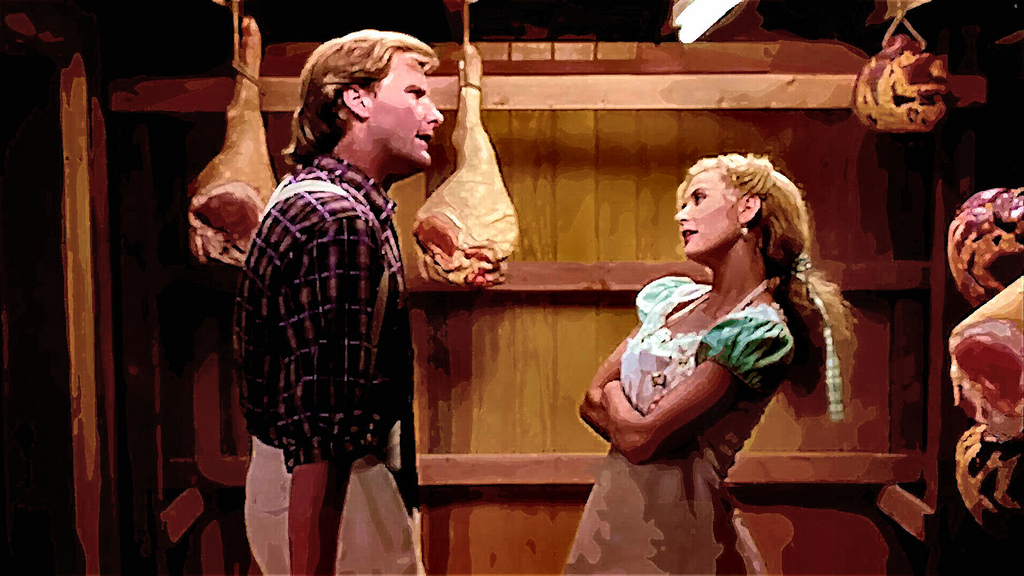
 discover that they cost a lot of money. Therefore, the best option is to watch them online free. You will get high-quality videos that are presented with a just touch of a button. This is known as the beauty of the site.
discover that they cost a lot of money. Therefore, the best option is to watch them online free. You will get high-quality videos that are presented with a just touch of a button. This is known as the beauty of the site. and excitement. You will find this form of entertainment the best after a long day’s work. You should let yourself relax and enjoy the pleasure of listening to amazing sounds and watching the quality action.
and excitement. You will find this form of entertainment the best after a long day’s work. You should let yourself relax and enjoy the pleasure of listening to amazing sounds and watching the quality action.



 Most of the time, people who are aiming to take advantage of the movie streaming sites don’t have a clue on how they can better view the films that they want to see. If you are a movie buff yourself, you should be aware that the process is so simple. All you need to have is a personal computer or laptop and a high-speed Internet connection. Furthermore, you can watch the latest movie trailers online. These will give you an idea of what to expect from a certain film that is yet to be shown in the theaters. You can also surf through the different genres and movie titles, check out the box office movies, and, of course, you will gain access to an online storehouse of movie collection. You just need to check out what every online movie portal has in store for you.
Most of the time, people who are aiming to take advantage of the movie streaming sites don’t have a clue on how they can better view the films that they want to see. If you are a movie buff yourself, you should be aware that the process is so simple. All you need to have is a personal computer or laptop and a high-speed Internet connection. Furthermore, you can watch the latest movie trailers online. These will give you an idea of what to expect from a certain film that is yet to be shown in the theaters. You can also surf through the different genres and movie titles, check out the box office movies, and, of course, you will gain access to an online storehouse of movie collection. You just need to check out what every online movie portal has in store for you. Since watching online movies has now become very popular, hundreds of streaming websites have started to show up. But you have to remember that they are not created equal. Before you start doing your movie marathon, make sure that you find a good site that can meet your expectations, giving you an amazing movie experience.
Since watching online movies has now become very popular, hundreds of streaming websites have started to show up. But you have to remember that they are not created equal. Before you start doing your movie marathon, make sure that you find a good site that can meet your expectations, giving you an amazing movie experience.
 off without knowing clear coordinates? This is the same concept that applies to guitar playing.
off without knowing clear coordinates? This is the same concept that applies to guitar playing. exercises should be customized for each student rather than giving students same exercises. A qualified teacher will help you improve your guitar skills. Practice highly effective exercises regularly, and you will make progress towards your goals.
exercises should be customized for each student rather than giving students same exercises. A qualified teacher will help you improve your guitar skills. Practice highly effective exercises regularly, and you will make progress towards your goals.
 The other choice of material is nylon. You will find nylon more durable as compared to cotton. Unfortunately, it is not 100% environmental friendly. They too have their benefits. For instance, they are cheaper as compared to cotton ones. Polyester is a great material for making promotional tote bags. These bags have similar properties as those made from nylon. They can accommodate huge weights and strong.
The other choice of material is nylon. You will find nylon more durable as compared to cotton. Unfortunately, it is not 100% environmental friendly. They too have their benefits. For instance, they are cheaper as compared to cotton ones. Polyester is a great material for making promotional tote bags. These bags have similar properties as those made from nylon. They can accommodate huge weights and strong.
 like? Sounds exciting, right? It is not just for those who already know how to play the guitar but also for those who want to learn.
like? Sounds exciting, right? It is not just for those who already know how to play the guitar but also for those who want to learn. Some beginners may think that they could not do it, or it is just too hard. I would say that nothing worth having in this world is easy to get. If you really want something, go for it. You need to work hard for it. Soon you will be surprised to see yourself picking up the guitar and make great music or play your favorite song that I bet would be a great feeling and accomplishment.
Some beginners may think that they could not do it, or it is just too hard. I would say that nothing worth having in this world is easy to get. If you really want something, go for it. You need to work hard for it. Soon you will be surprised to see yourself picking up the guitar and make great music or play your favorite song that I bet would be a great feeling and accomplishment.
 movie title. You also get to see the latest TV shows, and you can enjoy the best music videos as well. Once you install this app on not only your iOS device but also on your Android device, you won’t need to worry about how to watch your favorite actors and television shows. You can also listen to all the hit songs that you want to enjoy, and the best part is that you can do all this without needing to visit dangerous and dubious sites. You also do not need to register yourself or provide any personal details and information.
movie title. You also get to see the latest TV shows, and you can enjoy the best music videos as well. Once you install this app on not only your iOS device but also on your Android device, you won’t need to worry about how to watch your favorite actors and television shows. You can also listen to all the hit songs that you want to enjoy, and the best part is that you can do all this without needing to visit dangerous and dubious sites. You also do not need to register yourself or provide any personal details and information. If you are more interested in watching music videos, then you can do that by clicking on the Music video option. You can select your favorite musician or group, and you can also choose between watching the music video in low or medium or even High Definition.
If you are more interested in watching music videos, then you can do that by clicking on the Music video option. You can select your favorite musician or group, and you can also choose between watching the music video in low or medium or even High Definition.
 Want to create an event that people will remember for a long time? Then look no further than bouncy castle hire – the fun, original way to transform any kid’s birthday party, anniversary, prom, or special event. While bouncy castles have long been associated with children, that’s no longer the case. These inflatables can provide your guests with hours of fun whatever special occasion you are planning.
Want to create an event that people will remember for a long time? Then look no further than bouncy castle hire – the fun, original way to transform any kid’s birthday party, anniversary, prom, or special event. While bouncy castles have long been associated with children, that’s no longer the case. These inflatables can provide your guests with hours of fun whatever special occasion you are planning. Contact Us
Contact Us
 even find several online movie rental websites where to get movies or stream programs and also other entertainment. Online movie sites ensure you can unwind without having to stress over late fees or having the time to go and waste time on the road to pick up a DVD. The following are a few of the various benefits online movie rental sites can provide you.
even find several online movie rental websites where to get movies or stream programs and also other entertainment. Online movie sites ensure you can unwind without having to stress over late fees or having the time to go and waste time on the road to pick up a DVD. The following are a few of the various benefits online movie rental sites can provide you. just this, however by viewing content instantly, you will certainly not have to bother about returning DVDs or regarding late costs. It makes your life that considerably less demanding!
just this, however by viewing content instantly, you will certainly not have to bother about returning DVDs or regarding late costs. It makes your life that considerably less demanding!
 already incurred should something go wrong during DIY session. A home theater comprises of lots of components, and therefore you need to be an expert in electrical installations to do the job well. These are benefits of hiring a professional installer.
already incurred should something go wrong during DIY session. A home theater comprises of lots of components, and therefore you need to be an expert in electrical installations to do the job well. These are benefits of hiring a professional installer.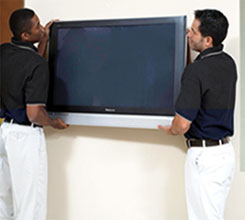 get free check-ups and visits.
get free check-ups and visits.

 become unsightly in the beautiful garden. You will be surprised to see thousands of leaves on your beautiful garden.
become unsightly in the beautiful garden. You will be surprised to see thousands of leaves on your beautiful garden.
 seasons. Even YouTube has a few clips made by different individuals. However, not all platforms offer high-quality streaming, and some do not have the legal right to show this series on their sites. It is, therefore, important to find credible sites and platforms that can offer the original movie with high quality.
seasons. Even YouTube has a few clips made by different individuals. However, not all platforms offer high-quality streaming, and some do not have the legal right to show this series on their sites. It is, therefore, important to find credible sites and platforms that can offer the original movie with high quality. Game of Thrones free watching will provide a list of results with sites that offer the game. You can filter down by looking through reviews and playing the movie trailer or a short part of the clips to determine its quality. You should also look for secure sites that feature sufficient protection from malware and unauthorized access.
Game of Thrones free watching will provide a list of results with sites that offer the game. You can filter down by looking through reviews and playing the movie trailer or a short part of the clips to determine its quality. You should also look for secure sites that feature sufficient protection from malware and unauthorized access.

 Smaller parties and gathering that are held at your home can be decorated with the help of your family. You can give a family member the responsibility of decoration the garden or house. For bigger parties held at outside venues, it may be best to get a specialist who can do the decor for you.
Smaller parties and gathering that are held at your home can be decorated with the help of your family. You can give a family member the responsibility of decoration the garden or house. For bigger parties held at outside venues, it may be best to get a specialist who can do the decor for you.
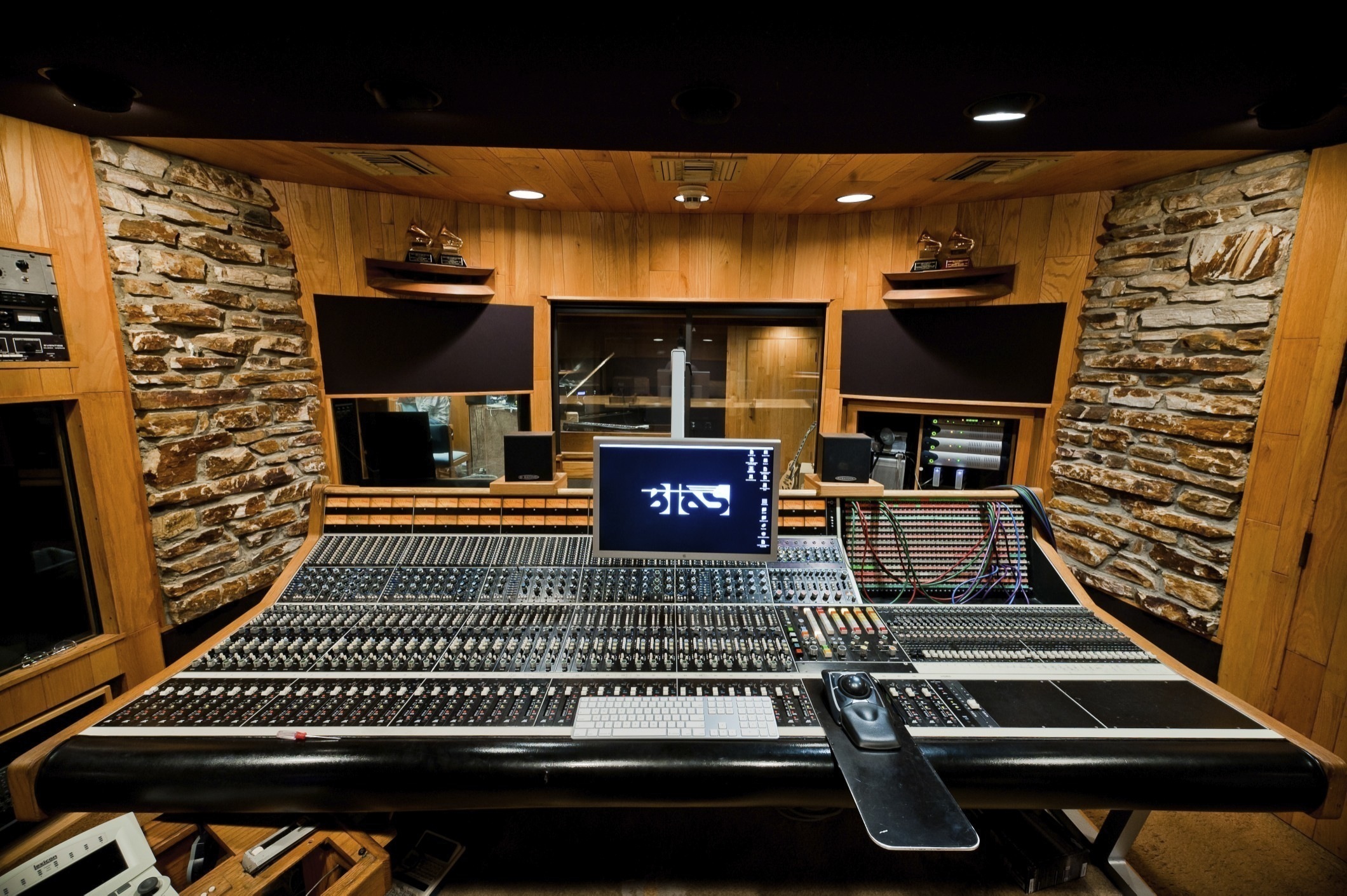
 Next step to be undertaken is the search on Google engine for any studio meeting your requirements in the city you live. If you search with the correct keywords you are bound to get several results. While you search for the right studio it is vital to keep a few things in mind. First, you must ascertain the rates for studio hire which may be on hourly basis or even daily basis. Daily rates may range from 100- 2,000 dollars per day. Also, it is important to note the requirement of audios engineers in order to operate recording equipment available. Recording equipment along with software is complicated, requiring professional help. If employing engineers, check the rates charged for their services.
Next step to be undertaken is the search on Google engine for any studio meeting your requirements in the city you live. If you search with the correct keywords you are bound to get several results. While you search for the right studio it is vital to keep a few things in mind. First, you must ascertain the rates for studio hire which may be on hourly basis or even daily basis. Daily rates may range from 100- 2,000 dollars per day. Also, it is important to note the requirement of audios engineers in order to operate recording equipment available. Recording equipment along with software is complicated, requiring professional help. If employing engineers, check the rates charged for their services. Those working on commercials for business would have bigger budgets and must therefore carefully choose the studio along with the team; after all you wouldn’t want to disappoint the client, especially if the budget is ample.
Those working on commercials for business would have bigger budgets and must therefore carefully choose the studio along with the team; after all you wouldn’t want to disappoint the client, especially if the budget is ample.
 world renowned as the party capital of Europe. People flock there during summer to have unlimited fun.
world renowned as the party capital of Europe. People flock there during summer to have unlimited fun. Apart from the party scene and the nightclubs one should also make some time to enjoy the beautiful natural places in Ibiza. Starting with the sandy beaches and secluded coves there is so much to see. You can also go inland and see the older villages and plantations. You can also mingle with the locals who are very friendly and easy to talk with.
Apart from the party scene and the nightclubs one should also make some time to enjoy the beautiful natural places in Ibiza. Starting with the sandy beaches and secluded coves there is so much to see. You can also go inland and see the older villages and plantations. You can also mingle with the locals who are very friendly and easy to talk with.
 A lot of people wonder where
A lot of people wonder where 
 There is a high chance that they have mentioned their favourite shopping site in one or two of their interviews. Last but not least, it might be really beneficial to visit some of the common celebrity shops. This is because you get a chance to see not just your favourite but even more stars. In most cases, stars tend to shop in areas where they can get everything done at once. Therefore it is more likely to find them shopping for clothes in shops that also have hairdressing services, spas and other treatments.
There is a high chance that they have mentioned their favourite shopping site in one or two of their interviews. Last but not least, it might be really beneficial to visit some of the common celebrity shops. This is because you get a chance to see not just your favourite but even more stars. In most cases, stars tend to shop in areas where they can get everything done at once. Therefore it is more likely to find them shopping for clothes in shops that also have hairdressing services, spas and other treatments.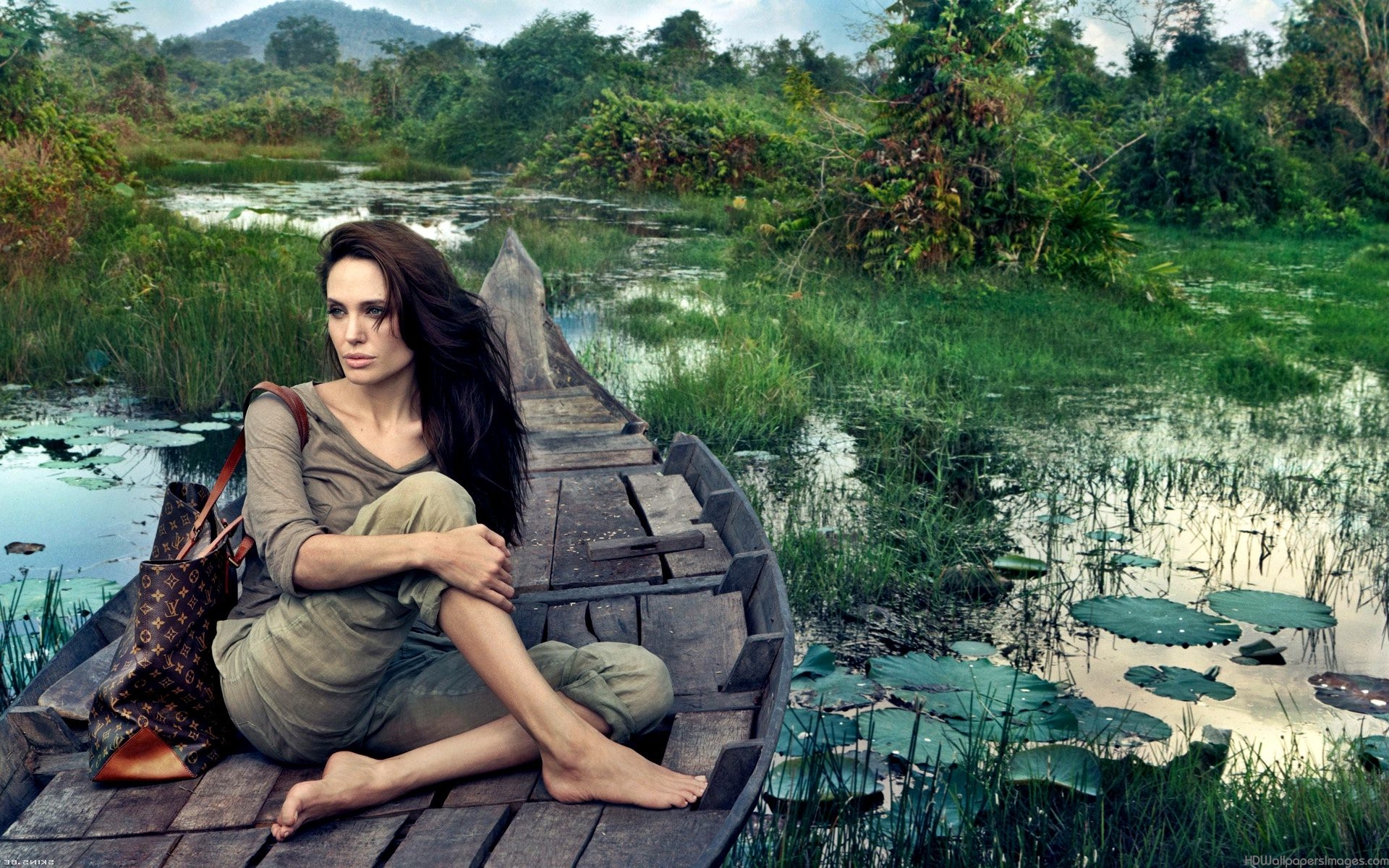



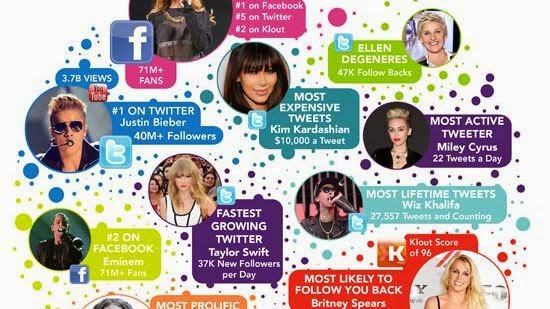
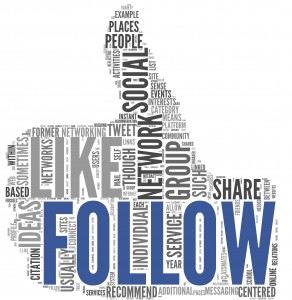 It’s difficult to accept that social media has been around for 10 years.
It’s difficult to accept that social media has been around for 10 years.